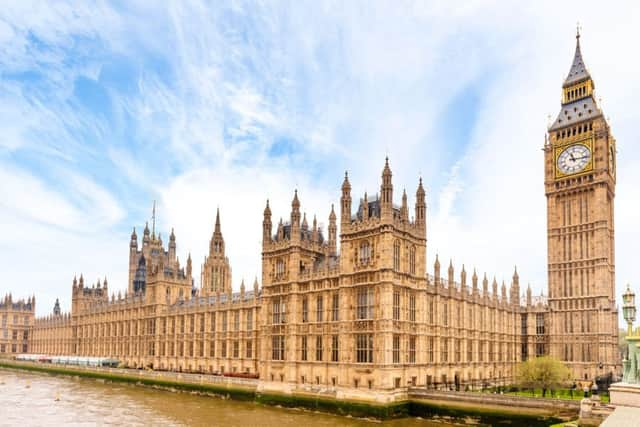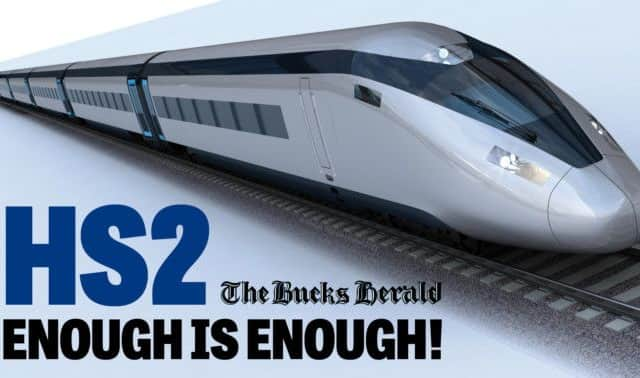The Government responds to YOUR 10,000 signature HS2 petition - see what they had to say here...


Our petition, which is still gathering signatures every day, calls for a vote for all MPs and a free vote for ministers on scrapping the HS2 scheme.
This important in their area because David Lidington, MP for Aylesbury has a Government role as Chancellor of the Duchy of Lancaster, and is bound by collective responsibility meaming he cannot vote against the scheme.
Advertisement
Advertisement
To sign the petition CLICK HEREHere is the Government’s statement, let us know your view by emailing [email protected]


HS2 has strong cross-party backing and was supported by the three largest parties at the last election. Phase One was approved by 399 votes to 42 in its final House of Commons vote in 2017.
Parliament approved legislation for the Government to construct HS2 Phase One, from London to the West Midlands, in 2017 with a majority of 399 to 42 in its final vote in the House of Commons.
The Government is therefore making progress. Currently more than 9,000 people, 320 apprentices and 2,000 businesses are working on building what will be the backbone of Britain’s rail network, over 98% of these businesses are based in the UK and more than 70% are SMEs. We expect around 30,000 jobs and 2,000 apprenticeships to be created at peak from the construction of the railway.
Advertisement
Advertisement
The strategic case for HS2 is based on a desire to improve connections between our largest cities and towns and boost capacity on Britain’s rail network, which is effectively full to new train paths. Demand on the West Coast Main Line has increased 190% since 1995. People are often standing at peak times the whole way on long distance journeys and trains coming in Birmingham, Leeds, Manchester and London.
The Government’s analysis shows that, as a new line, HS2 is the best solution for taking pressure off the existing rail network and adding capacity where it is needed most to accommodate growth and improve resilience. By providing direct inter-city services on dedicated high-speed lines, HS2 will free up space on the West and East Coast mainlines. As a new line HS2 is intended to solve this as a city-to-city network that will increase the number of trains and seats, as well as enabling existing commuter services to serve other stations.
HS2 has cross-party support and – along with Northern Powerhouse Rail – was a 2017 manifesto commitment for the three largest parties. It is also backed by Northern business and Metro Mayor and local authority leaders across the Midlands and North, who can see the benefits in terms of regeneration, jobs, improved passenger experiences and attracting investment. The Birmingham Chamber of Commerce have called HS2 “a game changer for our region”. Judith Blake, the Leader of Leeds City Council, has said that HS2 will “deliver enormous economic benefits” and “huge improvements in connectivity”.
The Government, and its delivery body HS2 Ltd, fully recognise that building a project on this scale is disruptive to communities and to people’s lives and homes. It is committed to providing assistance to those affected and maintains continuously dialogue with Parliamentarians, businesses and homeowners to ensure their needs are met.
Advertisement
Advertisement
Support for property owners is provided through statutory and non-statutory compensation schemes. These are comprehensive and go beyond the minimum legal requirements. All schemes are applicable along the whole route and will remain in place until one year after HS2 is operational.
It is the role of HS2 Ltd to work closely with local authorities and other interested parties along the line of route to ensure that construction is managed with regard to the needs of local communities wherever practicable.
We also recognise the environmental impacts from construction. The project will deliver more than 650 hectares of new woodland, wetland and wildlife habitats alongside the construction of the railway. What’s more, more than seven million new native trees and shrubs will be planted to help blend the line into the landscape and leave a lasting legacy of high-quality green spaces for local communities all along the route. This will include more than 33 square kilometres of new and existing wildlife habitat - an increase of around 30% compared to what is there now.